#1880s France
Text
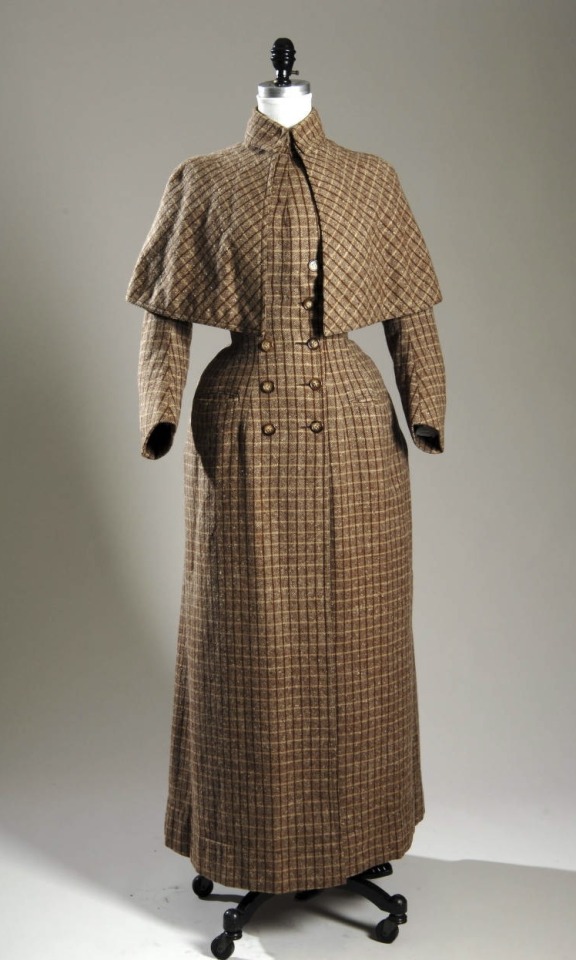

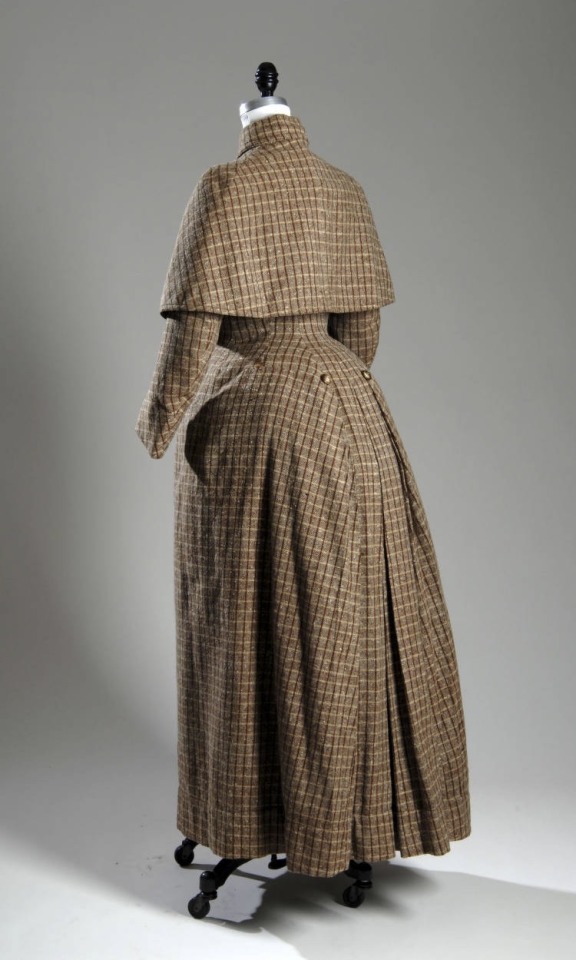
Brown wool overcoat with detachable cape, 1888, French.
Worn by Fannie Tuttle.
Chicago Historical Society.
#1888#1880s#1880s coat#overcoat#cape#1880s extant garment#brown#womenswear#extant garments#coat#19th century#wool#France#paris#1880s France#Fannie Tuttle#Chicago historical society
176 notes
·
View notes
Text
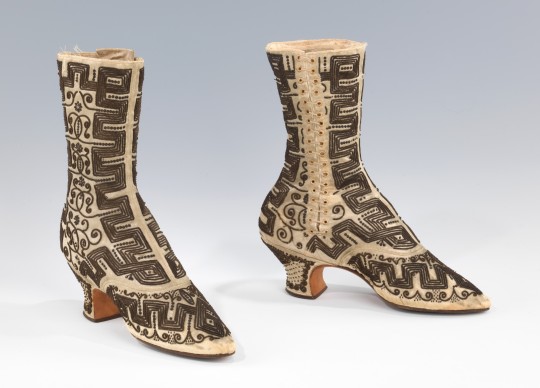
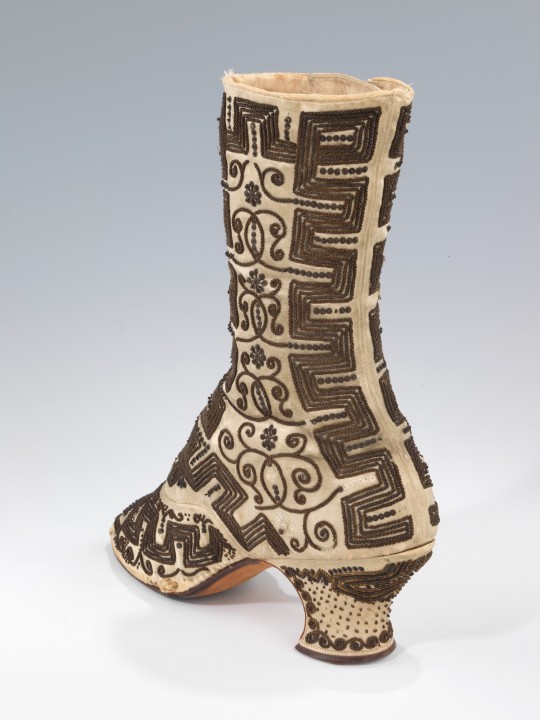
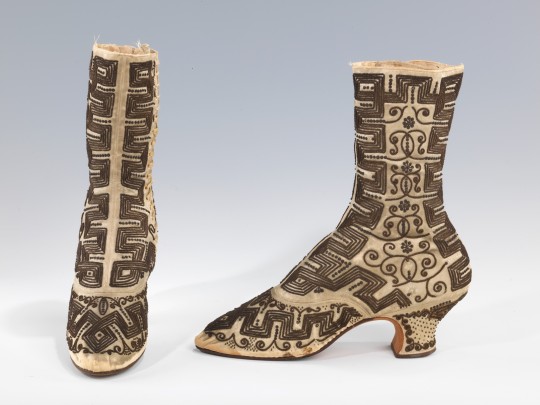
Evening Boots
1885-1890
Probably French
While the slipper and the strapped shoe were the most common choice for evening wear in the last third of the 19th century, boots did occasionally continue to appear. As with shoes, the basic evening boot was satin, either plain or featuring an embroidered vamp, usually in floral or foliate designs. Surviving examples of evening boots of the late 19th and early 20th centuries suggest, however, that those daring to wear something already outside of the ordinary often opted as well for unconventionally bold and unusual materials and trimmings. This pair of boots typifies that phenomenon: anachronistic side-lacing, novel and atypically exuberant fret and scroll motifs, and embroidery covering the entire boot, including the heel.
The MET (Accession Number: 2009.300.1477a–d)
#evening boots#fashion history#historical fashion#1880s#1890s#belle epoque#bustle era#turn of the century#france#off white#embroidery#accessories#shoes#the met
650 notes
·
View notes
Text
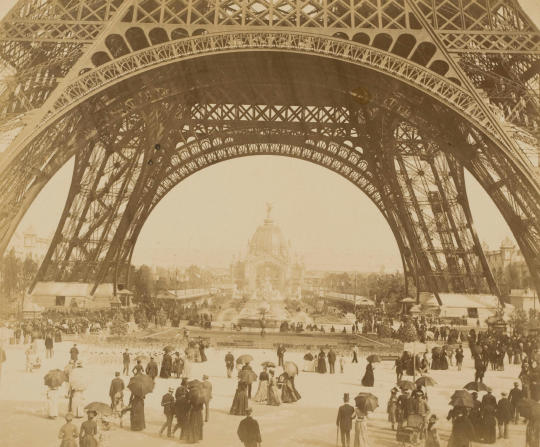
Exposition Universelle, Paris 1889 / Au Pied de la Tour (Universal Exhibition, Paris 1889 / At the Foot of the Tower), unknown French artist, 1889
#photography#vintage photography#vintage#black and white photography#paris#france#french#eiffel tower#1880s#1889
149 notes
·
View notes
Text

#impressionism#modern classical#western classical music#1880s#1890s#1900s#1910s#1920s#france#poll#Spotify
118 notes
·
View notes
Text


Woman with a Parasol, Facing Right (1886) and Woman with a Parasol, Facing Left (1886) by Claude Monet
#art#painting#oil painting#claude monet#monet#impressionism#1880's#1800's#19th century#history#woman with a parasol#france#french art#art history
79 notes
·
View notes
Text

From: Charles Weyher, Expériences de M. Weyher sur les tourbillons, trombes, tempêtes et sphères tournantes, [Planche II], Gauthier-Villars et fils, Paris, 1889 [Département Sciences et techniques, Bibliothèque nationale de France, Paris]
#graphic design#physics#meteorology#illustration#geometry#books#charles weyher#gauthier villars et fils#bibliothèque nationale de france#1880s
271 notes
·
View notes
Text
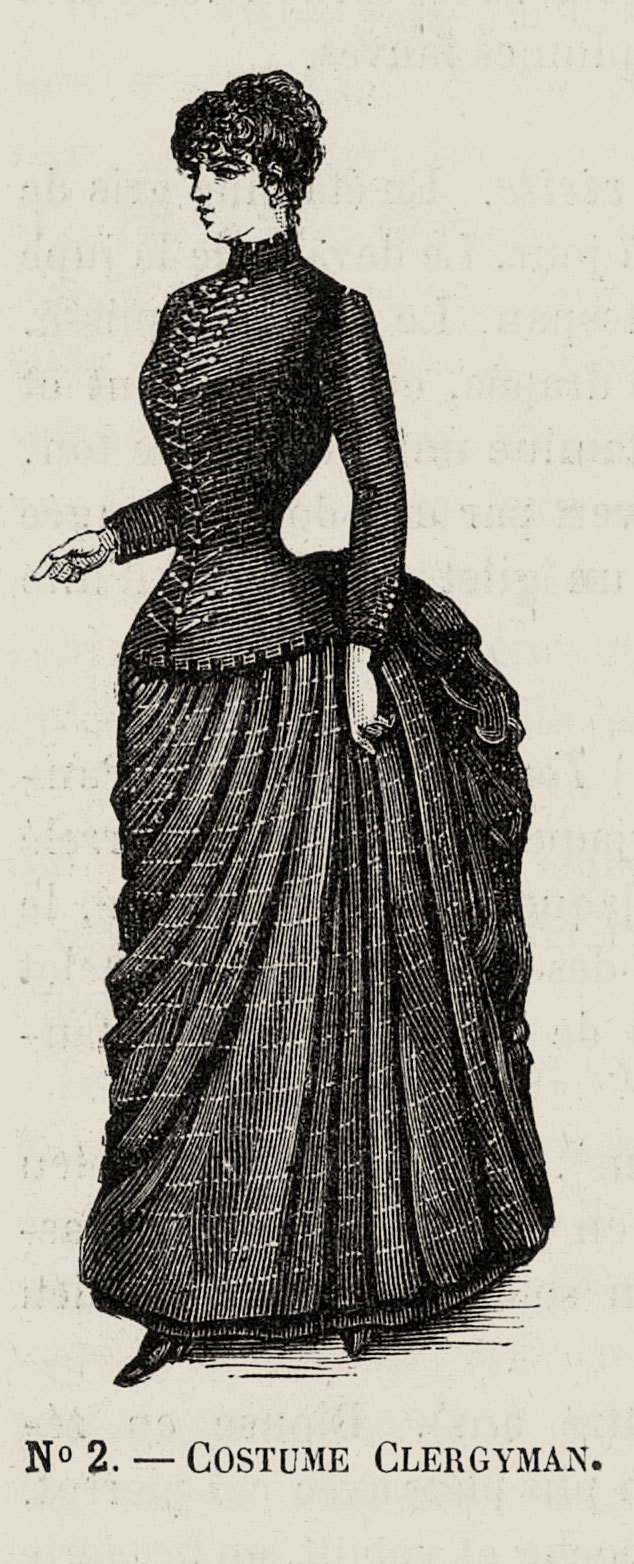
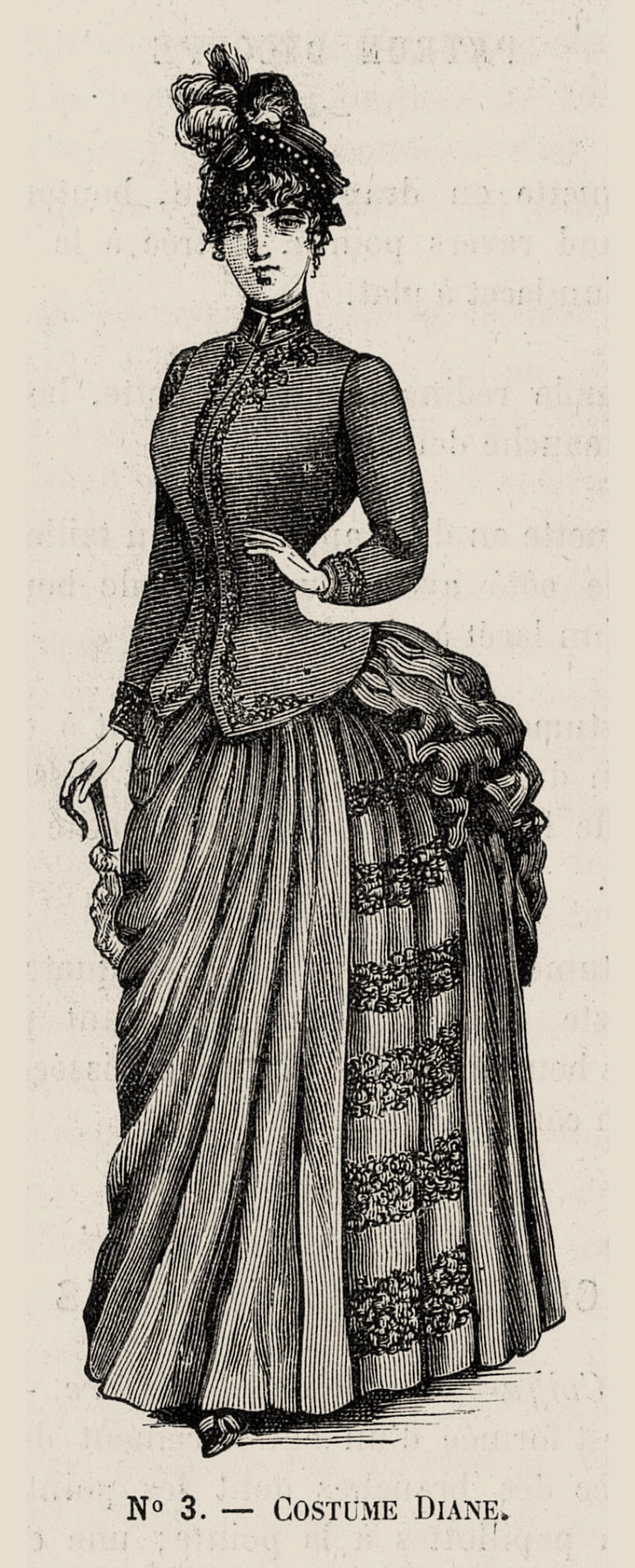

La Mode nationale, no. 7, 1 avril 1886, Paris. No. 2. Costume Clergyman. No. 3. Costume Diane. No. 4. Costume de visite. Bibliothèque nationale de France
No. 2. Costume Clergyman. Jupe de lainage vitraux bleu à filets rouges, drapée en biais sur le tablier, tombant en plis droits sur le côté, coquillant en pouf derrière. Là-dessus un jersey en laine bleue, lacé en aiguillettes par une tresse de mohair rouge.
No. 2. Clergyman suit. Blue stained glass woolen skirt with red threads, draped diagonally over the apron, falling in straight folds on the side, shell like a pouf behind. On top a blue wool jersey, laced in needles with a braid of red mohair.
—
No. 3. Costume Diane. En soie de sanglier fauve. La jupe montée à gros plis par devant, tombant en pouf derrière, fendue de côté sur un jupon barré d'astrakan naturel.
Le corsage en sanglier tricoté, brodé d'une fine guirlande en laine bourrue, d'un ton plus foncé. Capeline en paillasson beige, avec cordon de boules ambrées et panache de plumes fauves.
No. 3. Diana suit. In tawny boar silk. The skirt fitted with large pleats in the front, falling in a pouf at the back, slit on the side over a petticoat barred with natural astrakhan.
The bodice in knitted boar, embroidered with a fine garland of coarse wool, in a darker tone. Beige doormat capeline, with cord of amber balls and plume of fawn feathers.
—
No. 4. Costume de visite. En étamine gris de fer, ciselée de rayures à jour. Le devant de la jupe forme double pli Montespan. Le reste est plissé. Là-dessus une tunique drapée, ouverte devant et retroussée de côté en étamine unie, de même ton. Jersey en soie grise ouvert par une double rangée de boutons nacrés sur un gilet de velours d'une nuance plus soutenue.
No. 4. Visiting suit. In iron gray cheesecloth, chiselled with openwork stripes. The front of the skirt forms a Montespan double pleat. The rest is pleated. On top a draped tunic, open in front and rolled up at the side in plain cheesecloth, of the same tone. Gray silk jersey opened with a double row of pearly buttons on a velvet waistcoat of a more intense shade.
#La Mode nationale#19th century#1880s#1886#on this day#April 1#periodical#fashion#fashion plate#description#bibliothèque nationale de france#dress#suit#bustle#visiting
66 notes
·
View notes
Note
Okay but why do François and Arthur keep separating if they are the only ones who understand each other that well? It's their arrogant personality? Their vicious habits and need to be correct? Bc I actually see françois more aggressive and Arthur more permissive in the end which seems to be contradictory to what I see people writing in the fruk shippers. I don't get it, no hate
Nah nah all good valid question and i do agree actually on most of what you say.
They dont separate in the traditional and common way we associate humans and human relationships with. Not fully.
Lets say they spend a vacation together. They go to the beach and drink and find bars and terorrize supermarkets during their stay. They are happy and content and a destrucrive power couple. But they are still nations and nations have more responsibilities than two moddle aged human men could ever have. So they clash on a thing or two. One takes a stab at an old phychologial wound thought healed. The other gets irritated but doesnt express it (cus emotional repression is legal apparently) and he takes a jab at the other at their weak spot. And they are irritated at each other and start to bicker bc both are too hardheaded to apologize or talk like people who didnt grow up during the middle ages. Now any small mishap irritates the other. A big fight then separation. They dont see eath other for a longer period of time after that. They might hit it off again with an old friend/enemy/lover and its fine. The problem is that François knows exactly what to say and what nerve to pick and get on it to get Arthur to react as he wants. And Arthur is too much of a sarcastic person and generally a man who enjoys a good challege which he might not get from everyone he interacts with. At least not precisely the way he likes. Like Alfred, Arthur gets bored seemingly quickly with a person. Also his affection can be missinterpreted as belittlement or even a jibe or taunt. He portrays himself as polite and appropriate but in truth he is a hard man to get along with. And few people know how to deal and distinguish his comments.
So after a randevouz with Portugal whom he hasnt seen in a while, he is once again sitting at home by himself pondering what takeout to get bc who has time to cook these days. He is still annoyed with francois but doesnt think too much of it. So after a while something happens and he wants to talk to someone about it, so having all but forgotten their little feud he picks up the phone and dials the french phone number. François picks up and you can hear the irritation in the "I thought the lord is still pissed at me. What a surprise." To which Arthur responds with "Oh do shut up. Now listen I've recetly got word that......" because who can be as stubborn as mules yet forgetful as fish at the same time? These two.
I do think to a certain degree Arthur is more permissive. Especially as he got older and saw his empire sink into that ocean he loved so much. François has more of a need to prove that he is still on top of the game so he does tend to be more assertive in some situations and discussions.
Even if they dont speak to eachother for multiple years at a time, something will come that hauls them back to one another. Be it shared history, mutual understanding or good gossip.
In short, small things break them apart and smaller things bring them together.
#i miss them holy fuck#i need a holywood movie set in the 1880s in the english countryside and they are sitting at the breakfast table eating and insulting#eachother as they pass bread and wine and butter to oneanother#i need them stressed and on a time crunch trying to figure out a plan durong wartime#i need them say last words to eachother as they both die but have the last words be somthing like we should have stayed home today#hetalia#ask meli#hws england#hws france#fruk#my headcanons#im sorry if it doesnt answer ur ask but i did enjoy your point of view very much anon
55 notes
·
View notes
Text
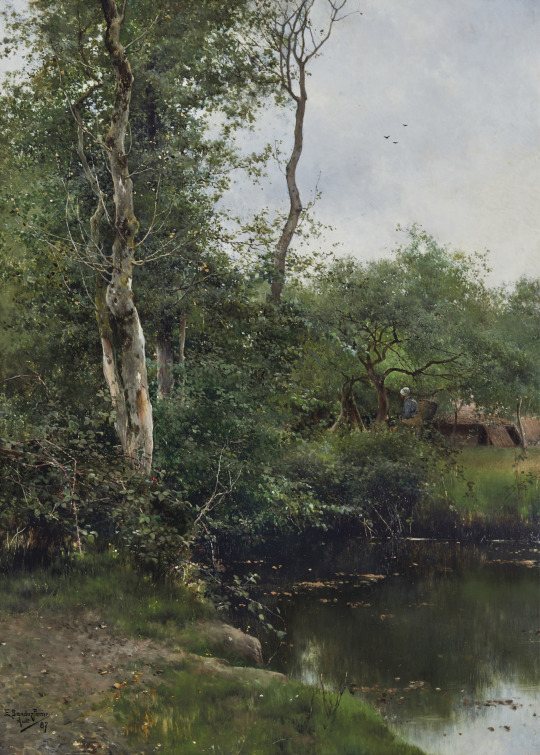
L'étang à Friaucourt, Ault (Picardie) [The Pond at Friaucourt, Ault (Picardy)], Emilio Sánchez Perrier, 1887
Oil on panel
22 x 15 7/8 in. (55.9 x 40.3 cm)
91 notes
·
View notes
Text
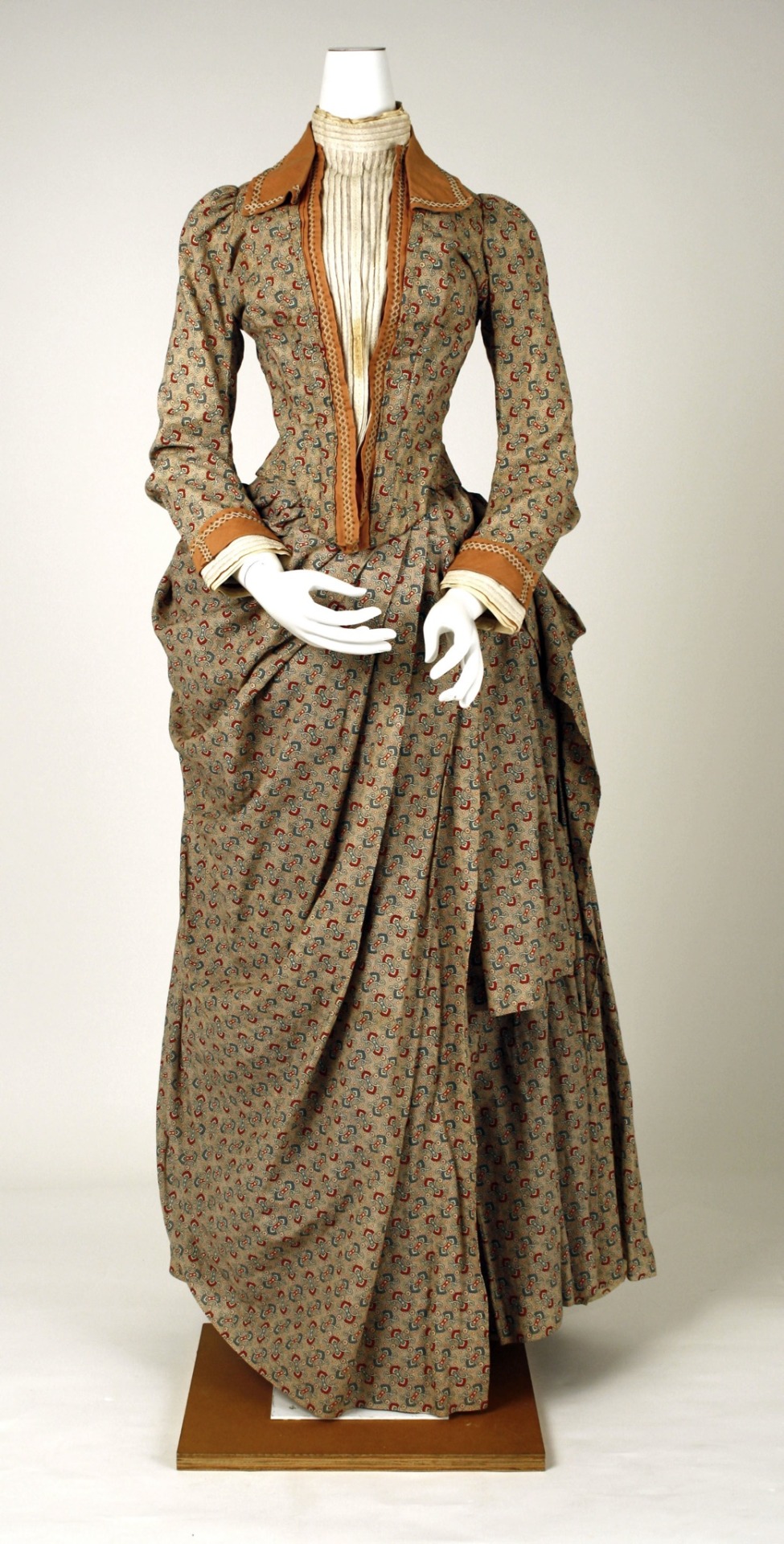


Brown printed cotton walking dress, ca. 1885, French.
Met Museum.
#brown#womenswear#extant garments#dress#silk#19th century#france#met museum#1885#cotton#printed cotton#walking dress#1880s#1880s dress#1880s extant garment#1880s France
330 notes
·
View notes
Text


Girl's Dress
1885-1890
Paris, France
The MET (Accession Number: 2009.300.993)
#dress#fashion history#historical fashion#1880s#1890s#1885#1889#1890#blue#silk#bustle era#gilded age#belle epoque#france#united states#children's fashion#the met
297 notes
·
View notes
Text
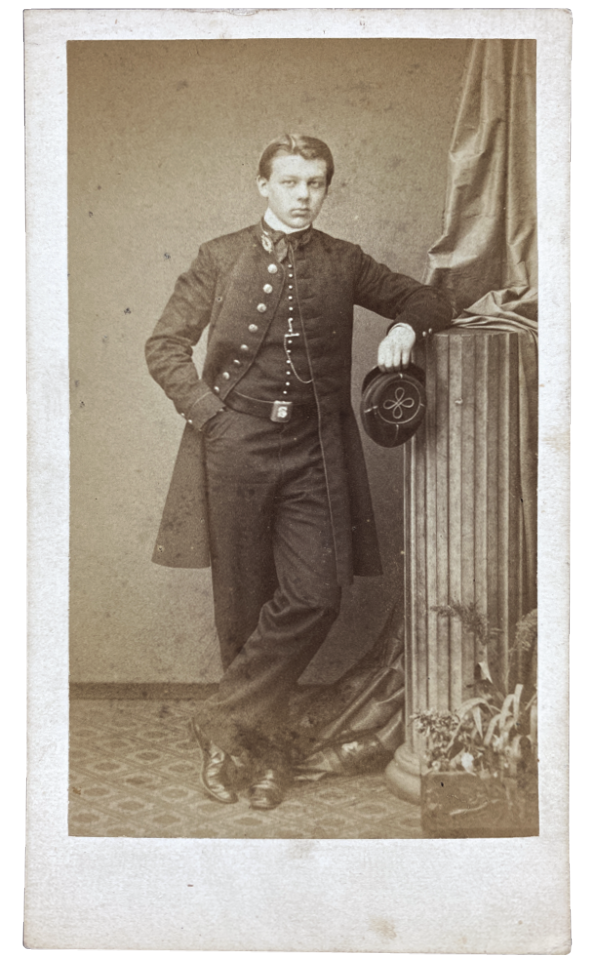
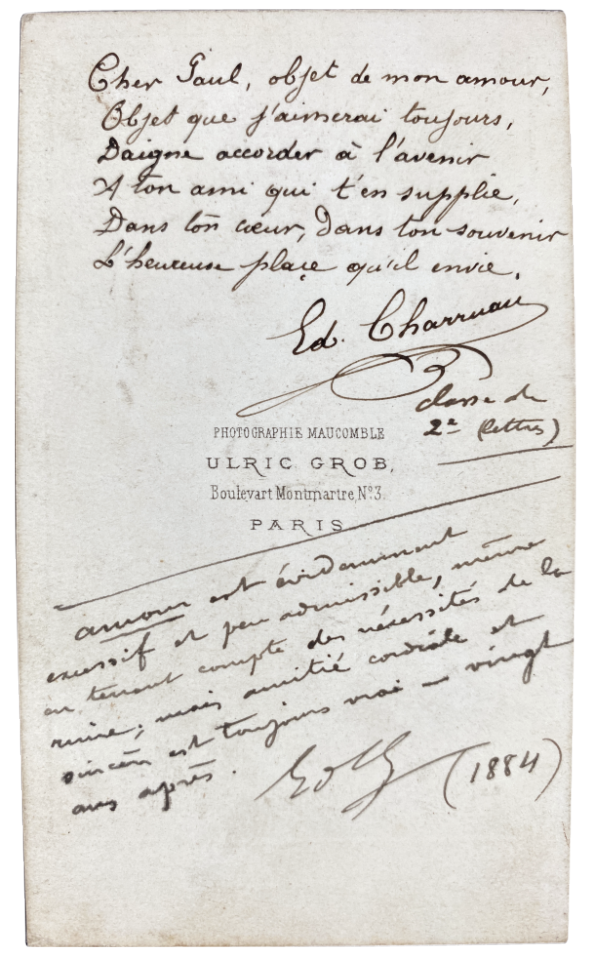
Carte de visite of a young cadet, c. 1860s. On the back, there is a very intriguing handwritten poem:
Cher Paul, objet de mon amour,
Objet que j'aimerai toujours,
Daigne accorder à l'avenir
A ton ami qui t'en supplie,
Dans ton coeur, dans ton souvenir
L'heureuse place qu'il envie.
Which Google Translate turns to:
Dear Paul, object of my love,
Object that I will always love,
Deign to grant in the future
To your friend who begs you,
In your heart, in your memory,
The happy place he desires.
Followed by a signature which might read "Ed Charruau" but I have difficulty making out the handwriting from here on. For that matter I am a little unsure whether that's really a "Paul" or a "Saul" or some secret third thing.
And below that, there is a note in a different, much messier hand that is largely illegible to me apart from a few tantalizing words—"amour" (underscored!), "admissible," "nécessités de la" (...what??), "toujours," "après"—dated 1884.
I can say with some confidence based on the style of the photography, the uniform, the photographer's backstamp and the card itself that this cdv dates no later than 1870, which means it is twenty-some years after this love(?) poem that someone writes this addition and I am absolutely dying for even a guess at what it reads! What happened? Did things work out for Ed and Paul(/Saul/?aul)??
Or... is this possibly actually all much less romantically charged in French actually (oh the irony), just guys being guys composing bro poems of platonic duditude to each other, as they do? Or less gay—could Paul/Saul/?aul somehow be a girl's name/nickname?
#or is it “cher GAUL” is our friend Ed pulling an Enjolras and declaring his feelings to France itself#tumblr please help me in my hour of need#the need to spill this long dead tea#19th century#1800s#1860s#1880s#19th century fashion#historical fashion#men's fashion#fashion history#military fashion#uniforms#19th century photography#cdv#carte de visite#gay interest#ephemera#poetry
208 notes
·
View notes
Text






Imperial Russian court dress worn by Princess Maria Maximilianovna of Leuchtenberg. x
Designed by Charles Frederick Worth in Paris, France, c. 1888.
#1880s#19th century#*#fashion#princess maria maximilianova#charles frederick worth#19th century dress#historical fashion#paris#paris france#historical clothing#antique#princess wilhelm of baden#royal fashion#grand duchess#russian royalty#russian royal family#19th century fashion#1880s fashion#1880s dress#beauharnais#house of beauharnais#house of leuchtenberg#imperial russia#russian empire#princess maria maximilianova of leuchtenberg#french royalty#french royal family
96 notes
·
View notes
Text
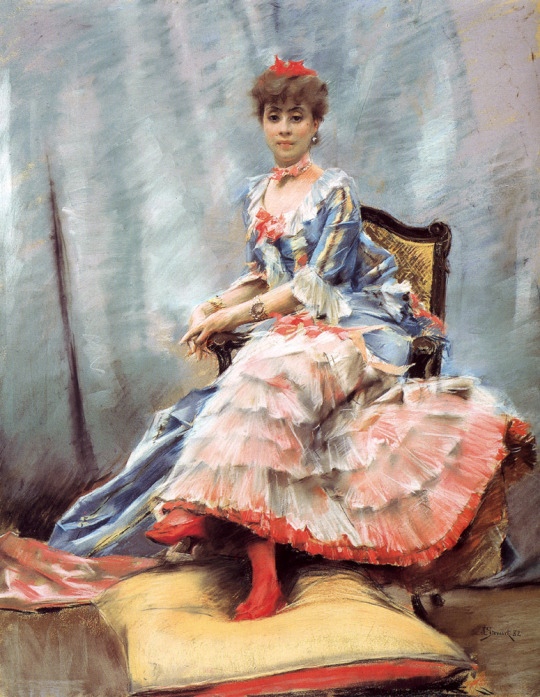
Portrait of Laure Hayman by Julius Leblanc Stewart, 1882
82 notes
·
View notes
Photo

Fan Design with Cats and Sunflowers, by Henri-Charles Guérard, c. 1885-1890
#drawings#art#fans#cats#white cats#sunflowers#flowers#silk#ink#chalk#graphite#gold#france#19th century#1880s
193 notes
·
View notes
Text

From: Charles Weyher, Expériences de M. Weyher sur les tourbillons, trombes, tempêtes et sphères tournantes, Gauthier-Villars et fils, Paris, 1889 [Département Sciences et techniques, Bibliothèque nationale de France, Paris]
#graphic design#physics#meteorology#illustration#geometry#books#charles weyher#gauthier villars et fils#bibliothèque nationale de france#1880s
159 notes
·
View notes